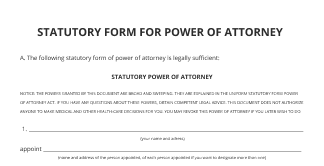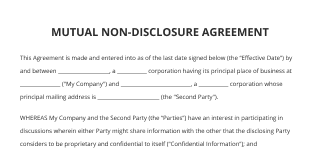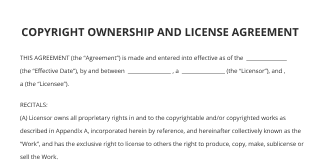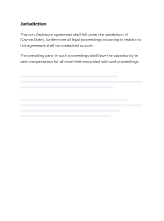Signature Applicant Resume Made Easy
Do more on the web with a globally-trusted eSignature platform
Standout signing experience
Robust reports and analytics
Mobile eSigning in person and remotely
Industry rules and compliance
Signature applicant resume, quicker than ever
Handy eSignature extensions
See airSlate SignNow eSignatures in action
airSlate SignNow solutions for better efficiency
Our user reviews speak for themselves






Why choose airSlate SignNow
-
Free 7-day trial. Choose the plan you need and try it risk-free.
-
Honest pricing for full-featured plans. airSlate SignNow offers subscription plans with no overages or hidden fees at renewal.
-
Enterprise-grade security. airSlate SignNow helps you comply with global security standards.

Your step-by-step guide — signature applicant resume
Using airSlate SignNow’s electronic signature any organization can increase signature workflows and eSign in real-time, providing a better experience to clients and workers. Use signature Applicant Resume in a couple of easy steps. Our handheld mobile apps make operating on the move feasible, even while offline! eSign documents from any place worldwide and make tasks faster.
Follow the stepwise guideline for using signature Applicant Resume:
- Log on to your airSlate SignNow account.
- Find your document within your folders or import a new one.
- Access the template and make edits using the Tools menu.
- Drop fillable areas, add textual content and sign it.
- Include numerous signers via emails configure the signing order.
- Indicate which individuals will get an signed version.
- Use Advanced Options to restrict access to the record and set an expiry date.
- Tap Save and Close when completed.
Additionally, there are more innovative tools accessible for signature Applicant Resume. Add users to your common digital workplace, browse teams, and track cooperation. Millions of customers across the US and Europe agree that a solution that brings everything together in a single holistic workspace, is exactly what enterprises need to keep workflows working efficiently. The airSlate SignNow REST API allows you to embed eSignatures into your app, internet site, CRM or cloud. Try out airSlate SignNow and enjoy quicker, easier and overall more efficient eSignature workflows!
How it works
airSlate SignNow features that users love
See exceptional results signature Applicant Resume made easy
Get legally-binding signatures now!
FAQs
-
How do I put my signature on my resume?
Suggested clip How To Insert Signature in Word Document - YouTubeYouTubeStart of suggested clipEnd of suggested clip How To Insert Signature in Word Document - YouTube -
Where should I put my signature on my resume?
A signature at the end of the resume in a way also acts as a validation by you that the details you mentioned in your resume are true to the best of your knowledge. It is proper business etiquette to sign your letter. However, if you are sending an email cover letter and resume, a signature might not be necessary. -
Where should signature be on a letter?
This information should be located at the top of the page, either in the center, or indented on the right side of the airSlate SignNow. You then include the name and address of the person to whom you are sending the letter. At the end of the letter, place your signature on the right side of the page. -
Do you sign below or above your name?
The signature includes your handwritten and typed name. For formal and semi-formal letters, add four lines of space below your closing, and then type your name. In formal letters, you should include your full name; in semi-formal letters, you may use only your first name. Sign your name in the space. -
How do you add a signature to a form?
Go to the Form Builder. Click the ADD FORM ELEMENT button on the left. Go to the WIDGETS tab and use the SEARCH box. Then drag your preferred signature field to the form. -
Do you sign your cover letter?
It is proper business etiquette (and shows attention to detail) to sign your letter. Err on the side of formality, and if you need any help figuring out how to close your cover letter, consider these possible sign-offs. However, if you are sending an email cover letter and resume, a signature isn't necessary. -
How can I write my signature?
Suggested clip How to design your own amazing signature - YouTubeYouTubeStart of suggested clipEnd of suggested clip How to design your own amazing signature - YouTube
What active users are saying — signature applicant resume
Related searches to signature Applicant Resume made easy
Signature applicant resume
Hey everyone this is Self Made Millennial, I'm Madeline Mann. Today I'm going to give you resume tips on how to tweak it to make sure it passes through a company's automated resume scanning software. I'll tell you how to figure out which keywords to put on your resume, how many times you should put them on your resume, where you should put them, so that these resume scanning robots will pass your resume along to actual human eyes so you can get the interview. This is a highly requested video by you viewers so that's why I am doing it, because I am here to serve you. What many job seekers don't realize is that up to 75 percent of resumes are rejected before a human even ever sees them, and that's because basically all companies use an applicant tracking system or an ATS, which is a way for them to organize all the resumes that come in, but some of these companies use the ATS to actually scan the resume and move those along to the recruiters which they think meet certain qualifications. ATS' scan from hard skills and soft skills, not these things that I call "fuzzy facts." Hard skills are things that are tactical and technical, while soft skills are tough to quantify, but they're core to a job like communication skills or ability to negotiate a contract. And the fuzzy facts are things that you label yourself as such as self-starter, high performer, results-driven. Sorry to say but an ATS does not care about those fuzzy facts nor do any humans, so leave them off your resume. So what keywords should you include on your resume? Well I think that you should go find at least 3 or 4 job descriptions that really fit the kind of role that you want, and they're all very similar. Take all of the job descriptions, take all the text, and paste it into a word cloud generator, and I'll link the one I use in the description. And so I'm going to show you an example of a word cloud I generated from 4 UX designer job descriptions. This word cloud tells us the keywords that we need to have on a resume like mock-ups, Agile, Sketch, research, wireframes, as well as some soft skills: creative, collaborate, communication. Now that we know the most important keywords to have on a resume, let's now tailor our resume further to a specific job description. So if I want to apply to this designer role, I take a look at the description, I see that actually we have a lot of these keywords already. We have Agile, we have wireframing, we have Sketch. But we're missing some really important ones such as having experience designing for these kind of platforms and apps. We don't have Gliffy, we would need to put that, as well as we don't have anything about prototyping. So we would likely get rejected by these bots if we don't make these updates to our resume. Make sure those additional keywords are in your resume but do not lie--I'm not telling you to lie. Only put them in if you actually have experience with them. Now let's move on to the frequency and formatting of your keywords. There are 2 ways that an ATS determines the strength of the skill you have. The first is the number of times it appears on your resume, and the second is the amount of time that skill was used based on where it's placed on the resume. Let's optimize for both. Let's start with the number of times a keyword should appear on your resume. So especially for the very important skills, make sure they appear on your resume 2 to 3 times. So for example, design and wireframes were really big so we want to make sure those both appear at least 2 times. I would also determine the importance of keyword by the number of times it shows up in that job's job description. The way to do this is to create a "core competencies" or "areas of expertise" section on your resume that displays your greatest hard and soft skills. But make sure, double check, that there are no fuzzy facts on there. If something has an abbreviation like SEO for search engine optimization, I would include both the abbreviated version and the full version. And then drizzle those keywords into your work experience and education sections where appropriate. Now let's talk about the length of experience for a skill, which is the second way that an ATS determines through keywords if you are qualified. The way the ATS works in this case is they read the amount of time that you were at a job, so let's say it was from January 2015 to January 2018, that's 3 years, so let's say some of the skills you listed, one of them is that you built a training facilitation. So that skill of building training facilitations will now be assigned the amount of 3 years experience. If a skill is just hanging out on its own, like it's up there in that core competency section we were talking about, then it is automatically ascribed 6 months experience. So that's why it's important to reiterate your skills throughout your resume. You know, it's a little bit tricky because I'll tell people this and then they will just pack their resume full of keywords and it's almost like they forgot that humans have to read this, so there's kind of a balance there. You really want your resume to be showing your accomplishments and I really believe that if you're doing this word cloud and you're reading the job description and tuning your resume to be towards that job description, you're going to be okay. So we just went over a lot, let's review. Create a word cloud with a few similar job descriptions and then use those main words to put into your initial resume draft. Second, before you apply to the job, make sure you read the job description. Pull out those additional key words and rearrange your resume to focus on those words. Third, keep in mind the number of times a word shows up on your resume, and you can use a skills section to help with this. Fourth, pay attention to how much time is ascribed to each skill based on the amount of time you're at each job where that keyword appears. And fifth, give it a good read over to make sure that human can still understand your story and accomplishments. That's it everyone, please do not overthink it too much, like I said, most people don't even read job descriptions so I know that you can be better than that. Make sure you hit subscribe because I am coming in hot with new content every week as well as hit a like on this video, because that's how my bots will know that you liked it. Thanks everyone, Wi-Fi high five.
Show more











































